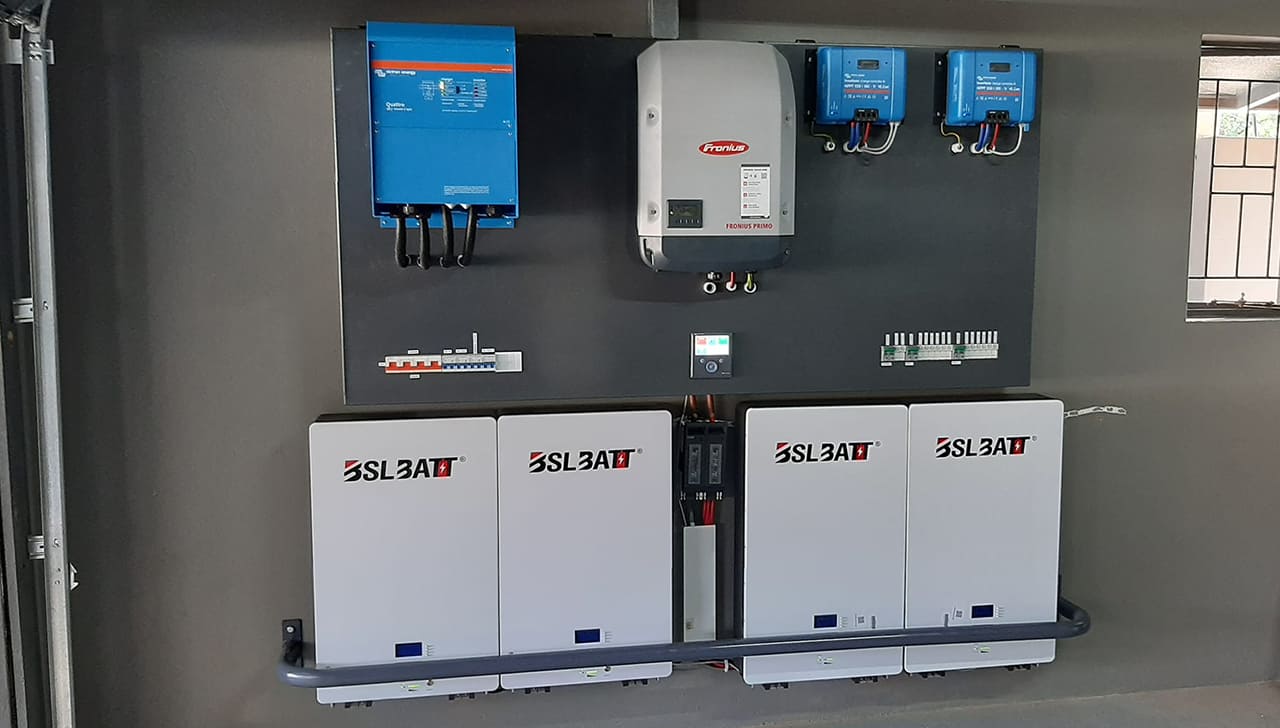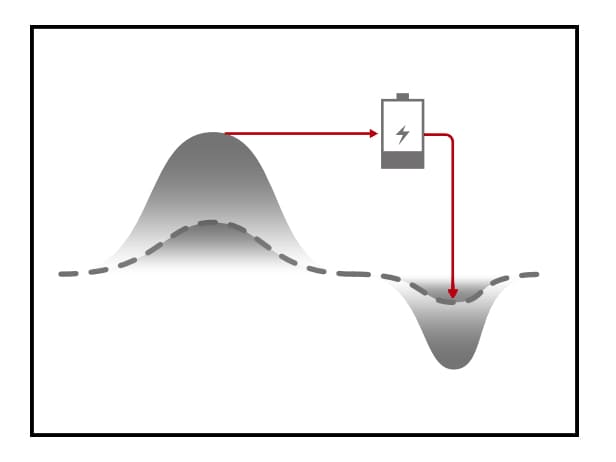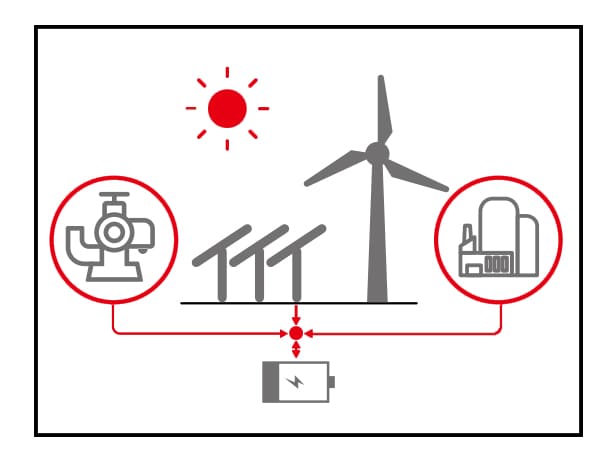With the development of new energy technologies and the increasing environmental problems around the world, increasing the utilization of clean energy such as solar and wind power is becoming one of the themes of our time. In this article, we will focus on solar energy utilization methods and introduce you how to scientifically design the best battery backup power for home.  Common Misconceptions When Designing A Home Energy Storage System 1. Focus only on battery capacity 2. Standardization of kW/kWh ratio for all applications (no fixed ratio for all scenarios) In order to achieve the goal of lowering the average cost of electricity (LCOE) and increasing system utilization, two core components need to be considered when designing a home energy storage system for different applications: the PV system and the home battery backup system. THE PRECISE SELECTION OF PV SYSTEM AND HOME BATTERY BACKUP SYSTEM NEEDS TO TAKE INTO ACCOUNT THE FOLLOWING POINTS. 1. Solar Radiation Level The intensity of local sunlight has a great influence on the choice of PV system. And from the perspective of power consumption, the power generation capacity of PV system should ideally be sufficient to cover the daily household energy consumption. The data related to the intensity of sunlight in the area can be obtained through the internet. 2. System Efficiency Generally speaking, a complete PV energy storage system has a power loss of about 12%, which consists mainly of ● DC/DC conversion efficiency loss ● Battery charge/discharge cycle efficiency loss ● DC/AC conversion efficiency loss ● AC charging efficiency loss There are also various unavoidable losses during the operation of the system, such as transmission losses, line losses, control losses, etc. Therefore, when designing the PV energy storage system, we should ensure that the designed battery capacity can meet the actual demand as much as possible. Considering the power loss of the overall system, the actual required battery capacity should be Actual required battery capacity = designed battery capacity / system efficiency 3. Home Battery Backup System Available Capacity The “battery capacity” and “available capacity” in the battery parameter table are important references for designing a home energy storage system. If the available capacity is not indicated in the battery parameters, it can be calculated by the product of the battery depth of discharge (DOD) and the battery capacity.
Common Misconceptions When Designing A Home Energy Storage System 1. Focus only on battery capacity 2. Standardization of kW/kWh ratio for all applications (no fixed ratio for all scenarios) In order to achieve the goal of lowering the average cost of electricity (LCOE) and increasing system utilization, two core components need to be considered when designing a home energy storage system for different applications: the PV system and the home battery backup system. THE PRECISE SELECTION OF PV SYSTEM AND HOME BATTERY BACKUP SYSTEM NEEDS TO TAKE INTO ACCOUNT THE FOLLOWING POINTS. 1. Solar Radiation Level The intensity of local sunlight has a great influence on the choice of PV system. And from the perspective of power consumption, the power generation capacity of PV system should ideally be sufficient to cover the daily household energy consumption. The data related to the intensity of sunlight in the area can be obtained through the internet. 2. System Efficiency Generally speaking, a complete PV energy storage system has a power loss of about 12%, which consists mainly of ● DC/DC conversion efficiency loss ● Battery charge/discharge cycle efficiency loss ● DC/AC conversion efficiency loss ● AC charging efficiency loss There are also various unavoidable losses during the operation of the system, such as transmission losses, line losses, control losses, etc. Therefore, when designing the PV energy storage system, we should ensure that the designed battery capacity can meet the actual demand as much as possible. Considering the power loss of the overall system, the actual required battery capacity should be Actual required battery capacity = designed battery capacity / system efficiency 3. Home Battery Backup System Available Capacity The “battery capacity” and “available capacity” in the battery parameter table are important references for designing a home energy storage system. If the available capacity is not indicated in the battery parameters, it can be calculated by the product of the battery depth of discharge (DOD) and the battery capacity.
| Battery Performance Parameter | |
|---|---|
| Actual Capacity | 10.12kWh |
| Available Capacity | 9.8kWh |
When using a lithium battery bank with an energy storage inverter, it is important to pay attention to the depth of discharge in addition to the available capacity, because the preset depth of discharge may not be the same as the depth of discharge of the battery itself when used with a specific energy storage inverter. 4. Parameter Matching When designing a home energy storage system, it is very important that the same parameters of the inverter and lithium battery bank are matched. If the parameters do not match, the system will follow a smaller value to operate. Especially in the standby power mode, the designer should calculate the battery charge and discharge rate and power supply capacity based on the lower value. For example, if the inverter shown below is matched to the battery, the maximum charge/discharge current of the system will be 50A.
| Inverter Parameters | Battery Parameters | ||
|---|---|---|---|
| Inverter Parameters | Battery Parameters | ||
| Battery input parameters | Operation mode | ||
| Max. charging voltage (V) | ≤60 | Max. charging current | 56A (1C) |
| Max. charging current (A) | 50 | Max. discharging current | 56A (1C) |
| Max. discharge current (A) | 50 | Max. short-circuit current | 200A |
5. Application Scenarios Application scenarios are also an important consideration when designing a home energy storage system. In most cases, residential energy storage can be used to increase the self-consumption rate of new energy and reduce the amount of electricity bought by the grid, or to store the electricity produced by PV as a home battery backup system. Time-of-Use Battery backup power for home Self-generation and self-consumption Each scenario has a different design logic. But all design logic is also based on a specific home electricity consumption situation.  Time-of-Use Tariff If the purpose of battery backup power for home is to cover the load demand during peak hours to avoid high electricity prices, the following points should be noted. A. Time-sharing strategy (peaks and valleys of electricity prices) B. Energy consumption during peak hours (kWh) C. Total daily power consumption (kW) Ideally, the available capacity of home lithium battery should be higher than the power demand (kWh) during peak hours. And the power supply capacity of the system should be higher than the total daily power consumption (kW).
Time-of-Use Tariff If the purpose of battery backup power for home is to cover the load demand during peak hours to avoid high electricity prices, the following points should be noted. A. Time-sharing strategy (peaks and valleys of electricity prices) B. Energy consumption during peak hours (kWh) C. Total daily power consumption (kW) Ideally, the available capacity of home lithium battery should be higher than the power demand (kWh) during peak hours. And the power supply capacity of the system should be higher than the total daily power consumption (kW).  Battery Backup Power for Home In the home battery backup system scenario, the home lithium battery is charged by the PV system and the grid, and discharged to meet the load demand during grid outages. In order to ensure that the power supply will not be interrupted during power outages, it is necessary to design a suitable energy storage system by estimating the duration of power outages in advance and understanding the total amount of electricity used by households, especially the demand of high-power loads.
Battery Backup Power for Home In the home battery backup system scenario, the home lithium battery is charged by the PV system and the grid, and discharged to meet the load demand during grid outages. In order to ensure that the power supply will not be interrupted during power outages, it is necessary to design a suitable energy storage system by estimating the duration of power outages in advance and understanding the total amount of electricity used by households, especially the demand of high-power loads.  Self-generation and Self-consumption This application scenario aims to improve the self-generation and self-use rate of the PV system: when the PV system generates enough power, the produced power will be supplied to the load first, and the excess will be stored in the battery to meet the load demand by discharging the battery when the PV system generates insufficient power. When designing a home energy storage system for this purpose, the total amount of electricity used by the household each day is taken into account to ensure that the amount of electricity generated by the PV can meet the demand for electricity. The design of PV energy storage systems often requires consideration of multiple application scenarios to meet the home’s electricity needs under different circumstances. If you want to explore the more detailed parts of the system design, you need technical experts or system installers to provide more professional technical support. At the same time, the economics of home energy storage systems are also a key concern. How to get a high return on investment (ROI) or whether there is a similar subsidy policy support, have a great impact on the design choice of PV energy storage system. Finally, considering the possible future growth of electricity demand and the consequences of decreasing effective capacity due to hardware lifetime decay, we recommend to increase the system capacity when designing battery backup power for home solutions.
Self-generation and Self-consumption This application scenario aims to improve the self-generation and self-use rate of the PV system: when the PV system generates enough power, the produced power will be supplied to the load first, and the excess will be stored in the battery to meet the load demand by discharging the battery when the PV system generates insufficient power. When designing a home energy storage system for this purpose, the total amount of electricity used by the household each day is taken into account to ensure that the amount of electricity generated by the PV can meet the demand for electricity. The design of PV energy storage systems often requires consideration of multiple application scenarios to meet the home’s electricity needs under different circumstances. If you want to explore the more detailed parts of the system design, you need technical experts or system installers to provide more professional technical support. At the same time, the economics of home energy storage systems are also a key concern. How to get a high return on investment (ROI) or whether there is a similar subsidy policy support, have a great impact on the design choice of PV energy storage system. Finally, considering the possible future growth of electricity demand and the consequences of decreasing effective capacity due to hardware lifetime decay, we recommend to increase the system capacity when designing battery backup power for home solutions.
Post time: May-08-2024








